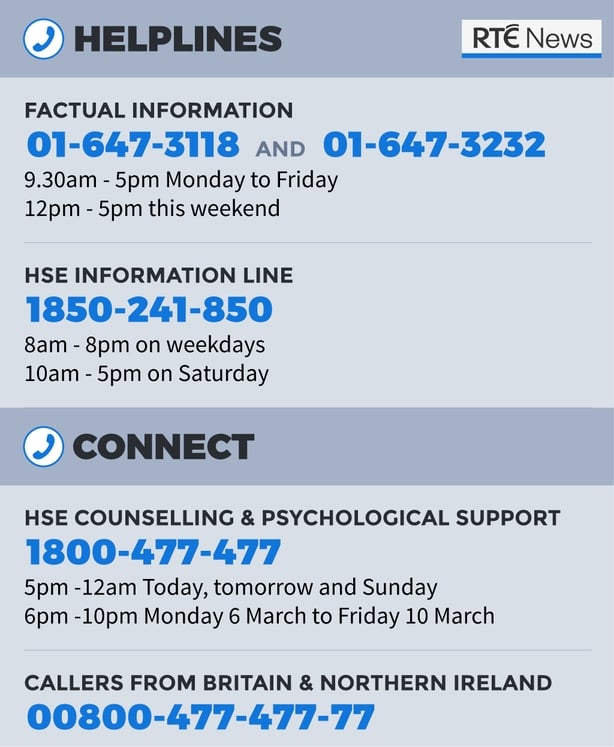Groups campaigning for generations of unmarried mothers and their children have said the State must ensure that all human remains buried in unmarked graves at institutions are identified.
It follows confirmation yesterday by the Mother and Baby Homes Commission of Investigation that significant quantities of human remains have been discovered at the site of a children's burial ground in Tuam in Co Galway.
Minister for Children and Youth Affairs Katherine Zappone has said the first concern must be to respect the dignity and the memory of the children.
She also said that Galway County Council would engage with local residents and those affected to decide what happens to the remains.
We need your consent to load this rte-player contentWe use rte-player to manage extra content that can set cookies on your device and collect data about your activity. Please review their details and accept them to load the content.Manage Preferences
In a statement this evening, the Association of Catholic Priests said: "It will be argued, with some cause, that the Catholic Church was not totally to blame, as the whole culture of Ireland during that period made it acceptable for pregnant unmarried girls to be treated so shamefully.
"But the Church, because of its dominant position, must take a large degree of responsibility for what happened.
"Also, we must acknowledge that individual priests in parishes, through the advice they gave to parents of unmarried pregnant women, and in some cases through public condemnation from pulpits, helped to limit to Mother and Baby homes the options available to parents."
In a statement yesterday, the commission said significant quantities of human remains have been discovered in at least 17 of the 20 underground chambers which were examined earlier this year.
It added: "These remains involved a number of individuals with age-at-death ranges from approximately 35 foetal weeks to two-three years."
The mother-and-baby home operated from 1925 to 1961; a number of the samples are likely to date from the 1950s, the commission said. Further scientific tests are being conducted.


